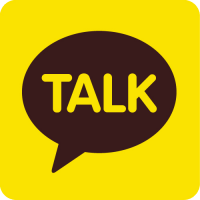How to Open a Bank Account in Canada as a Foreigner (2025)
Last updated: Aug 2025. If you’re moving to Canada—or staying mid-term as a student, worker, or newcomer—opening a local bank account makes daily life simpler: getting paid, paying rent and bills, building credit, and avoiding foreign transaction fees. This guide walks you through eligibility, required documents, account types, fees, and practical tips. Policies change, so always verify details on the bank’s official site before you apply.
1) Who can open an account?
Most major Canadian banks allow non-residents, newcomers, international students, temporary workers, and permanent residents to open accounts. The exact rules and documents vary by bank and your status (e.g., study or work permit). A branch visit is often the fastest path; some banks support online pre-application and in-person verification after arrival.
2) Account types you’ll see
- Chequing account: Everyday spending and bill payments. Comes with a debit card and Interac e-Transfer. Monthly plan fees may apply but can be waived with a minimum balance or newcomer/student plan.
- Savings account: Earn interest on your balance; fewer transactions. Keep your emergency fund here and move cash to chequing as needed.
- Newcomer/Student packages: Bundled chequing plans that waive fees for 6–12 months, sometimes with welcome cash bonuses and free international transfer credits.
3) Documents you’ll likely need
Requirements vary by bank and your immigration status. In general, prepare these:
- Primary ID: Passport (valid).
- Immigration status: Study permit or work permit (if applicable), or proof of PR/landing.
- Address evidence in Canada: e.g., lease, utility bill, or a letter from your school/employer. (Some banks allow temporary addresses; ask what they accept.)
- Tax/ID numbers: A Social Insurance Number (SIN) is not required to open a basic chequing account, but banks may request it for interest reporting and identity verification if you open an interest-bearing account. If you don’t have a SIN yet, ask the bank about alternatives.
- Enrollment or employment letter (if applicable) for student/worker packages.
4) Big banks newcomers usually consider
Canada’s largest banks include RBC, TD, Scotiabank, BMO, and CIBC. Each offers a newcomer or international student package. Compare four things: (1) fee-free months and what happens after, (2) monthly plan fee, (3) free Interac e-Transfer counts, (4) ATM network and global partners.
| Bank | Newcomer/Student highlights (typical) | When fees kick in |
|---|---|---|
| RBC | Fee waivers for newcomers; broad ATM network; easy e-Transfer. | After promo months, monthly fee unless minimum balance or eligible status. |
| TD | Strong branch coverage; student plans with fee waivers; reliable e-Transfer. | Monthly fee post-promo; fee tiers based on plan. |
| Scotiabank | Popular newcomer package; Scene+ rewards with some debit/credit combos. | Fees after promo; check minimum balance options. |
| BMO | Newcomer offers; some plans include free global money transfer credits. | Monthly fee post-promo period. |
| CIBC | Straightforward newcomer/student plans; fee waivers and e-Transfer. | Fees return after promo unless conditions met. |
Note: Promotions and fee waivers change frequently. Before you decide, check the bank’s current newcomer/student page for exact terms.
5) Step-by-step: How to open your account
- Pick a bank & plan: Check fees, free e-Transfers, ATM access, and promo length.
- Book an appointment: Schedule at a nearby branch. Many banks allow you to upload basic details online to speed things up.
- Bring documents: Passport, permit (if any), address evidence, and letters from school/employer as needed.
- In-branch verification: The advisor will verify ID, collect your signature, and set up your debit card and online banking.
- Activate & fund: Deposit initial funds; set up mobile app, Interac e-Transfer, and alerts. Ask how to waive the monthly fee after the promo.
6) Fees to watch
- Monthly plan fee: $0–$30+ depending on plan. Often waived for newcomers/students or with a minimum balance.
- e-Transfer fee: Many plans include unlimited e-Transfers; some cap free transactions per month.
- ATM fees: Using another bank’s ATM can add $2–$3; international withdrawal fees are higher.
- Foreign transaction fee: If you use a Canadian debit/credit card in another currency, expect ~2.5–3% unless the card explicitly waives it.
7) Credit building basics (optional but recommended)
Canada’s credit system is separate from your home country. If you’ll stay more than a few months, consider a student or newcomer credit card from the same bank. Use it for small purchases and pay in full to start your credit history. Ask about secured cards if you don’t qualify immediately.
8) International transfers & currency
- Incoming wires: Your bank can provide the institution number, transit, and account details. There may be an incoming wire fee.
- FX conversion: Compare the bank’s rate against specialist services; sometimes banks offer promo rates for newcomers.
- Hold periods: Cheques and large deposits may be held for several business days—plan rent and tuition payments accordingly.
▢ Mobile app and online banking set up
▢ Interac e-Transfer activated and tested
▢ Fee waiver conditions noted in writing (minimum balance, student status, promo end date)
▢ Paperless statements and alerts enabled
▢ Advisor’s email/branch phone saved
9) FAQ
Can I open an account before arriving? Some banks let you start online and finish in person with ID. If you don’t have a Canadian address yet, ask whether a temporary address or school letter works.
Do I need a SIN? Not for a basic chequing account, but banks may request it for interest-bearing accounts and identity checks. If you don’t have a SIN yet, ask what alternative they accept.
How long does it take? With an appointment and correct documents, you can often open and use your account the same day.
Disclaimer: This article is informational only. Bank offers, fees, and requirements change and differ by branch. Always confirm on the bank’s official website or with a branch advisor before applying.




